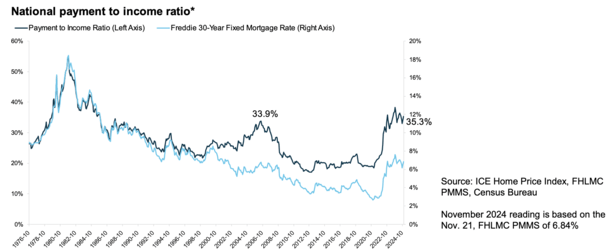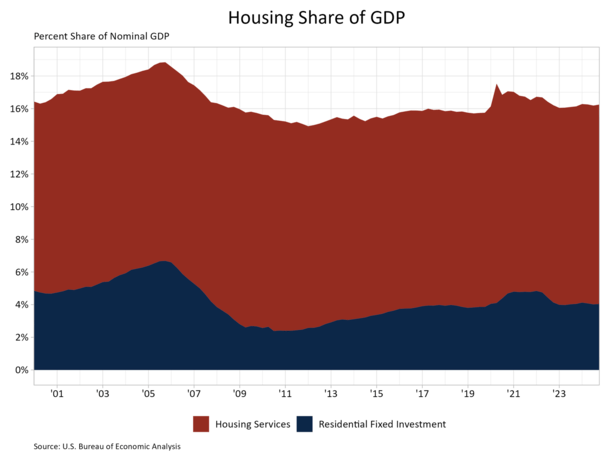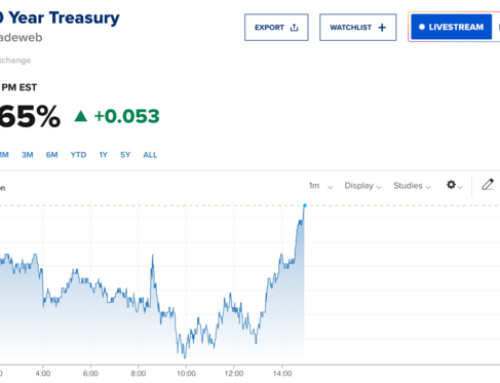If you haven’t heard, the Trump administration imposed tariffs on imports from Mexico, Canada, and China today.
As of February 1st, there is a 25% tariff on goods from Canada and Mexico, and a 10% tariff on Chinese goods.
At issue with the Mexican and Canadian tariffs is the impact it might have on the home building industry, with the pair accounting for nearly 25% of building material imports.
The National Association of Home Builders (NAHB) penned a letter to President Trump shortly after his order, asking him to consider the effects of the tariffs.
Assuming they remain in place, the cost to build new homes could increase, which would likely be passed onto the consumer via higher home prices.
Housing Affordability Could Worsen with Tariffs in Place

The NAHB’s letter pointed out that we already face a “severe housing shortage and affordability crisis,” which would only be exacerbated by higher building costs.
And while Trump has said he wants to increase the affordable housing supply, the new tariffs could have the opposite effect.
In addition, there are the ongoing deportations, which could drive up the cost of skilled labor to build new homes.
But the pressing issue now is the tariffs, which will likely lead to higher material costs on key items such as aluminum, gypsum, lumber, and steel.
“While home building is inherently domestic, builders rely on components produced abroad, with Canada and Mexico representing nearly 25% of building materials imports,” said NAHB’s chairman Carl Harris in the letter.
On top of the increased costs due directly to the tariffs, there is a fear of further supply chain disruptions as demand increases for these sought-after goods.
Taken together, the costs of new homes will go up and it could even “hinder rebuilding efforts in areas affected by natural disasters,” such as cities hit by the recent Southern California wildfires.
Ultimately, the organization is asking that the Trump administration exempt these “critical construction materials” from the tariffs.
The Home Builders Might Build Fewer Homes If Costs Go Up

Home builders will also be less incentivized to construct new homes if the costs are too high and the profits just aren’t there.
They are already sitting on a near-double digit months’ supply of inventory as affordability challenges limit sales.
And there will come a point when the math simply doesn’t pencil and fewer will be able to afford to purchase a home.
We are already facing the worst housing affordability in decades so there’s not a compelling reason to make it worse.
Fewer homes being built also means another hit to the economy, which hurts GDP, along with rising unemployment of construction workers. There are lots of knock-on effects.
The home building sector is a major component of the economy, representing 4.0% of GDP in the most recent quarter.
At the same time, a lack of new home supply could further limit choice for home buyers, who are already struggling with few viable options.
Given the fact that the home builders have greatly increased market share as existing home supply remains largely locked-in to low fixed mortgage rates, it could be ill-advised to apply the tariffs.
In addition, it calls into question our ability to produce these goods domestically, if that’s the intention of the tariffs.
Tariffs Also Put Upward Pressure on Mortgage Rates
As I wrote yesterday, tariffs lead to higher mortgage rates, assuming they increase inflation, which many believe they do.
After all, if the cost to build a home is higher, those costs are typically passed onto the buyer.
This buyer, already grappling with high food costs, insurance costs, and just about everything else, now gets saddled with a higher shelter cost.
And rising inflation is the last thing we want right now, given the ongoing fight over the past few years.
This could mean that your typical home buyer will soon face both a higher asking price and a higher mortgage rate.
Yes, both can rise in tandem, despite many believing they have an inverse relationship.
If there is a short supply of homes, and cost keeps going up, fewer will be built. People still need shelter. And if there’s less of it, expect the cost to rise.
Hopefully the tariffs will be short-lived and/or rescinded while avoiding a wider trade war with Canada and Mexico.
Chances are the tariffs are more of a persuasive tactic to negotiate better terms, but it risks turning into a bigger problem if not dealt with swiftly.
Given the spring home buying season is right around the corner, we aren’t risk of another dismal year for home sales unless this gets sorted out.
Read on: Existing Home Sales Fall to Lowest Level Since 1995


